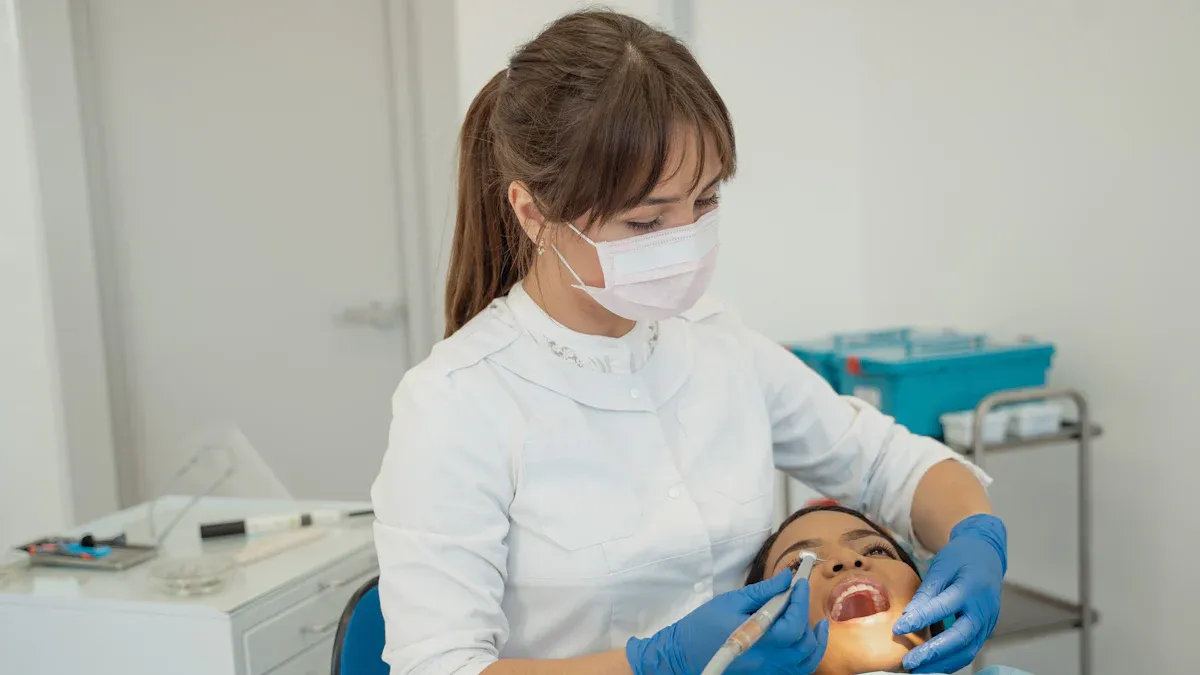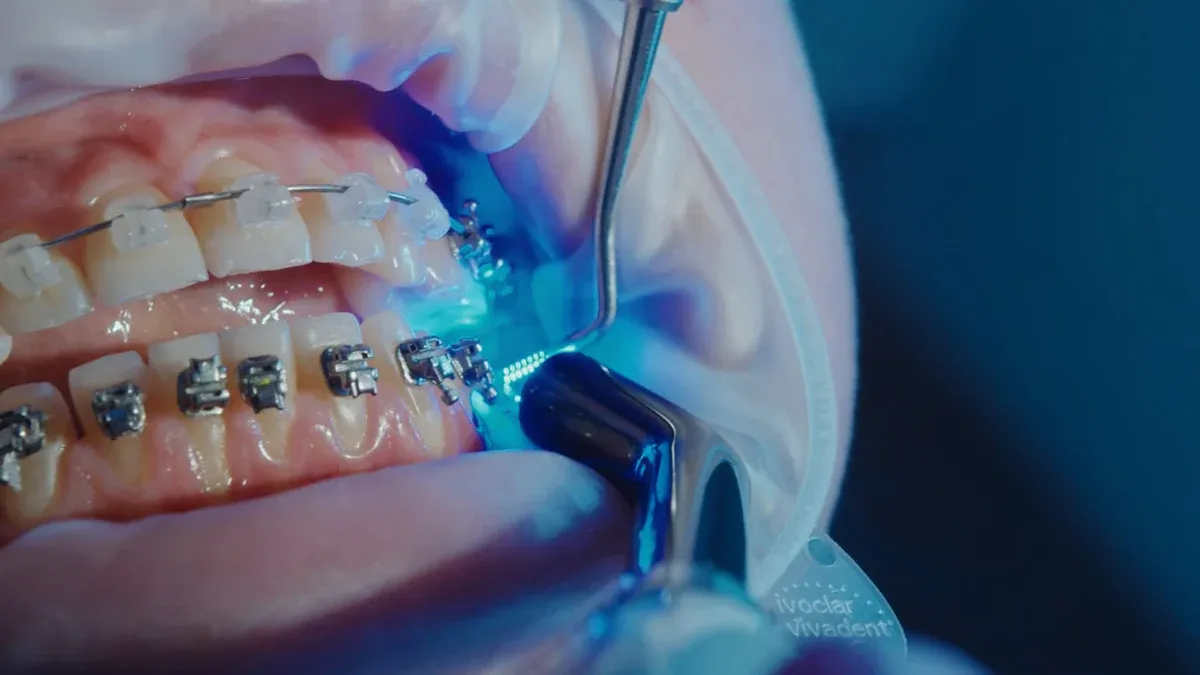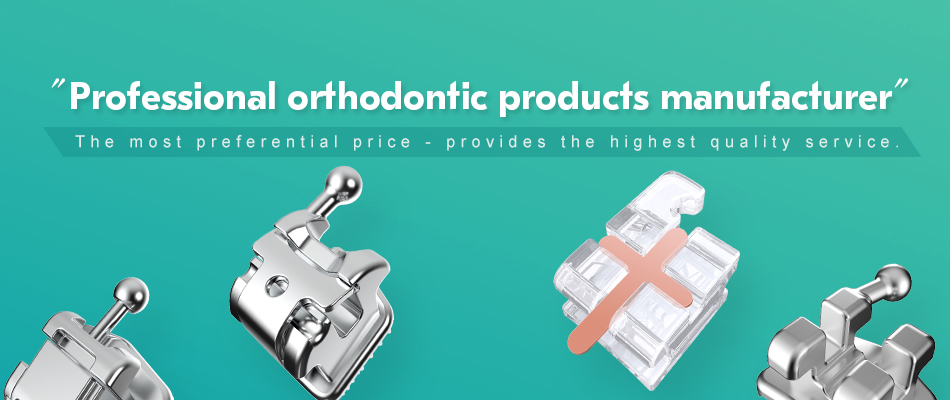
Orthodontic clinics face growing financial challenges in delivering quality care. Rising staffing costs, which have increased by 10%, and overhead expenses, up by 6% to 8%, strain budgets. Many clinics also struggle with staff shortages, as 64% report vacant positions. These pressures make expense management critical. Outsourcing non-core services can help reduce costs and improve cash flow.
Balancing affordability with quality care requires orthodontic budget optimization. Clinics must track key metrics like gross profit margin and cost of goods sold. These tools help identify cost-saving opportunities while maintaining high standards of care.
Key Takeaways
- Metal braces are the cheapest, costing $3,000 to $6,000. They are a good choice for people on a budget.
- Buying supplies in bulk from trusted sellers saves money. It also keeps materials ready and helps the clinic work better.
- Payment plans and financing options make braces more affordable. This helps clinics get more patients to agree to treatment.
- Working with local clinics and dental schools can cut costs. It also helps more people get good orthodontic care.
- Teaching patients about braces and how to care for them avoids problems. This leads to better results and lower costs.
Types of Braces and Their Cost Implications

Metal Braces: Affordable and Reliable
When it comes to affordability and reliability, metal braces remain a top choice. I often recommend them to patients looking for effective treatment at a lower cost. These braces use metal brackets and wires to align teeth, making them one of the most common orthodontic solutions.
- Cost Range: Metal braces typically cost between $3,000 and $6,000, making them the most budget-friendly option.
- Effectiveness: They are highly effective in treating a wide range of dental issues, from minor misalignments to complex cases.
- Insurance Coverage: Many insurance plans cover a portion of the cost, which further reduces the financial burden.
Metal braces may not be the most aesthetic option, but their affordability and proven results make them a reliable choice for many patients.
Ceramic Braces: Balancing Aesthetics and Cost
For patients who prioritize aesthetics, ceramic braces offer a great alternative. These braces use tooth-colored or clear brackets, blending in with natural teeth. While they are less noticeable, they do come at a higher price point.
- Cost Range: Ceramic braces generally cost more than metal braces, ranging from $4,000 to $8,000.
- Advantages: They provide a more discreet appearance, which appeals to adults and teens concerned about the visibility of their braces.
- Considerations: Ceramic braces are slightly less durable than metal ones and may require more care to avoid staining.
I find that ceramic braces strike a balance between appearance and functionality, making them a popular choice despite the added cost.
Lingual Braces: Hidden Costs and Benefits
Lingual braces are unique because they are placed on the back of the teeth, making them virtually invisible. This feature makes them ideal for patients who want a discreet treatment option. However, they come with higher costs and some challenges.
- Cost Range: Lingual braces are among the most expensive options, costing between $8,000 and $10,000.
- Challenges: Patients may experience initial speech difficulties and tongue irritation. Eating can also be tricky, as food tends to get trapped more easily.
- Benefits: Despite these challenges, lingual braces offer significant cosmetic advantages and can correct bite issues effectively.
Many patients appreciate the hidden nature of lingual braces, even if they require a larger financial investment.
Clear Aligners: Modern and Flexible Options
Clear aligners have revolutionized orthodontic care. I often recommend them to patients who value convenience and aesthetics. These aligners are transparent, removable trays that gradually shift teeth into alignment. Their discreet appearance and flexibility make them a popular choice.
- Cost Range: Clear aligners vary in price depending on the region. In India, they cost between $600 and $1,800. In Western markets, prices range from $2,000 to $8,000. This wide range allows clinics to offer options that fit different budgets.
- Market Growth: The global clear aligners market was valued at $6.49 billion in 2024. It is projected to grow at an impressive 31.3% compound annual growth rate from 2025 to 2030. This growth reflects the increasing demand for modern orthodontic solutions.
- Patient Acceptance: Nearly 50% of orthodontic practices report case acceptance rates between 40% and 70%. This highlights the importance of affordability and flexibility in patient decisions.
Clear aligners offer several advantages. Patients can remove them while eating or brushing, which simplifies oral hygiene. Their transparent design makes them nearly invisible, appealing to adults and teens alike. I’ve noticed that patients appreciate the comfort and convenience these aligners provide.
However, clinics must consider the initial investment in technology and training required to offer clear aligners. Despite this, the rising demand and patient satisfaction make them a worthwhile addition to any practice. By offering clear aligners, clinics can cater to modern patient preferences while optimizing their budget.
Clear aligners represent the future of orthodontics. Their flexibility, aesthetic appeal, and growing popularity make them an excellent choice for both patients and clinics.
Strategies for Orthodontic Budget Optimization
Bulk Purchasing from Trusted Suppliers
I’ve found that bulk purchasing is one of the most effective ways to reduce costs in orthodontic clinics. Ordering materials in larger quantities lowers per-unit costs, which can lead to significant savings over time. Many suppliers also offer free or discounted shipping for bulk orders, further reducing expenses. This approach not only saves money but also ensures a steady supply of essential materials, minimizing disruptions in patient care.
For example, a recent study showed that 60% of orthodontic practices experienced growth in same-store production from 2023 to 2024. This growth was partly attributed to cost-saving strategies like bulk purchasing. Additionally, practices that adopted this method reported higher case acceptance rates, ranging from 40% to 70%, as they could offer more affordable treatment options.
Tip: Partnering with trusted suppliers ensures consistent quality while maximizing savings. Building long-term relationships with reliable vendors can also unlock additional discounts.
Negotiating Supplier Contracts
Negotiating contracts with suppliers is another powerful strategy for orthodontic budget optimization. I always recommend discussing terms like bulk discounts, payment schedules, and loyalty rewards with vendors. Long-term contracts often result in better pricing and more predictable expenses, which helps clinics manage their budgets effectively.
A case study revealed that clinics negotiating supplier contracts achieved substantial savings. For instance, outsourcing non-core services reduced salary and benefit costs, while long-term agreements with suppliers lowered the overall cost of dental supplies. Regular expense audits also helped identify unnecessary spending, allowing clinics to allocate resources more efficiently.
Note: Negotiation isn’t just about price. It’s also about securing favorable terms that align with your clinic’s operational needs.
Leveraging Technology to Reduce Overheads
Technology plays a crucial role in reducing overhead costs. Advanced diagnostic tools like intraoral cameras and radiography machines improve productivity and accuracy, saving time and resources. Software solutions automate administrative tasks, such as scheduling and billing, which reduces the need for additional staff. Telehealth technology also enables virtual consultations, cutting down on in-office expenses.
According to the American Dental Association, adopting new technologies has increased productivity by 15% and reduced expenditures by 13%. AI-powered treatment planning and 3D printing have further streamlined orthodontic workflows, enhancing both efficiency and precision.
Tip: Investing in technology may require an initial outlay, but the long-term savings and improved patient care make it a worthwhile investment.
Streamlining Inventory and Resource Management
Efficient inventory and resource management play a vital role in reducing costs and improving operational efficiency in orthodontic clinics. I’ve seen firsthand how optimizing inventory processes can minimize waste and ensure uninterrupted patient care.
One effective strategy involves maintaining a lean inventory. Clinics can reduce carrying costs by avoiding excess stock and focusing on essential supplies. This approach also lowers the risk of stockouts, ensuring that braces and other orthodontic materials are always available when needed. Delivery costs, which often account for 25-30% of inventory expenses, can be reduced by consolidating shipments and working with reliable suppliers.
Another method I recommend is consignment inventory. This allows clinics to store supplier-owned goods without upfront payment, improving cash flow and shifting inventory risks to suppliers. It’s particularly useful for items with unpredictable demand, such as specialized orthodontic tools or brackets. By adopting this model, clinics can focus their resources on other areas of orthodontic budget optimization.
Monitoring inventory turnover is equally important. A high turnover ratio reflects efficient inventory management and quick sales, which optimize cash flow and reduce carrying costs. Regularly tracking this metric helps clinics align their inventory strategies with patient needs, ensuring that resources are used effectively.
I’ve noticed that clinics with streamlined inventory processes achieve higher accuracy rates and better customer satisfaction. For example, businesses excelling in inventory management often outperform peers in revenue growth and profitability. These clinics not only reduce costs but also enhance their ability to deliver quality care.
Tip: Implementing inventory management software can simplify tracking and forecasting, making it easier to maintain optimal stock levels and reduce waste.
By adopting these strategies, clinics can improve their financial health while continuing to meet patient expectations.
Enhancing Patient Affordability
Flexible Payment Plans and Financing Options
I’ve seen how flexible payment plans can make orthodontic care more accessible. Many patients hesitate to start treatment due to the upfront costs. Offering financing options allows them to spread payments over time, making braces more affordable. For example, dental financing programs often include low-interest or interest-free plans. These options help patients budget effectively while investing in their dental health.
Breaking costs into manageable monthly payments benefits both patients and clinics. Patients can proceed with treatment without financial strain, while clinics experience higher case acceptance rates. This approach also supports those without insurance or with limited coverage. By providing these plans, I’ve noticed a significant improvement in patient satisfaction and affordability.
Collaborating with Insurance Providers
Partnering with insurance providers is another way to enhance affordability. I always recommend working closely with insurers to ensure patients receive maximum benefits. Many insurance plans cover a portion of orthodontic treatments, reducing out-of-pocket expenses. By simplifying the claims process, clinics can help patients navigate their coverage more easily.
Selective networks also play a role in reducing costs. These networks lower premiums and medical expenditures without compromising care. For instance, clinics within these networks often see increased patient volume due to reduced costs. This collaboration benefits both patients and practices, creating a win-win situation.
Offering Discounts and Seasonal Promotions
Seasonal promotions and discounts attract cost-conscious patients. I’ve found that offering limited-time deals encourages patients to commit to treatment. For example, discounts during back-to-school or holiday seasons often generate interest. These promotions not only boost patient affordability but also increase clinic revenue.
Additionally, loyalty programs can reward returning patients with discounts on follow-up treatments. This strategy builds trust and encourages long-term relationships. Clinics can also offer referral discounts, motivating patients to recommend services to friends and family. These initiatives enhance affordability while fostering patient loyalty.
Tip: Combining discounts with flexible payment plans maximizes affordability and ensures more patients can access quality care.
Partnering with Community Clinics and Dental Schools
Partnering with community clinics and dental schools offers a practical way to optimize orthodontic budgets while expanding access to care. I’ve seen how these collaborations can benefit both clinics and patients. Community clinics often serve as outreach centers, bringing orthodontic services closer to underserved populations. This reduces travel time for patients and makes care more convenient. Dental schools, on the other hand, provide access to skilled students and faculty who deliver high-quality treatment at reduced costs.
One of the key advantages of working with community clinics is the potential for cost savings. Outreach centers often operate with lower overhead expenses, which can translate into more affordable care for patients. These clinics also improve patient throughput by streamlining appointment durations. Shorter appointments allow clinics to serve more patients in less time, enhancing efficiency without compromising quality.
Dental schools bring another layer of value. Partnering with these institutions allows clinics to tap into a pool of talented students eager to gain hands-on experience. Under the supervision of experienced faculty, these students provide excellent care at a fraction of the usual cost. This not only reduces expenses but also helps train the next generation of orthodontists.
Tip: Collaborating with dental schools can also foster innovation. Many schools use cutting-edge technology and techniques, which can inspire new approaches in your practice.
These partnerships don’t just save money—they also enhance patient satisfaction. Patients appreciate receiving care in familiar, accessible settings. By reducing barriers to treatment, clinics can build stronger relationships with their communities. I’ve found that these collaborations create a win-win situation, improving both financial health and patient outcomes.
Maintaining Cost Efficiency Through Patient Education

Educating Patients on Treatment Options
I always emphasize the importance of educating patients about their treatment options. When patients understand the benefits and limitations of each option, they make informed decisions that align with their needs and budgets. Engaged patients tend to follow treatment plans more diligently, attend appointments regularly, and adopt healthier habits. This leads to better outcomes and higher satisfaction.
- Patients who actively participate in their care experience improved results and stronger adherence to treatment plans.
- Educating patients fosters a collaborative environment, ensuring care remains patient-centered and responsive.
By explaining the cost implications and effectiveness of different braces, I help patients choose the most suitable option. This approach not only improves their experience but also ensures they maximize the value of their investment.
Promoting Proper Braces Maintenance
Proper maintenance of braces is essential for reducing treatment costs. I always remind patients to follow my instructions carefully to avoid complications. For example, maintaining good oral hygiene prevents issues like tooth decay and gum disease, which could lead to additional expenses.
| Aspect of Maintenance | Impact on Costs |
|---|---|
| Proper oral hygiene | Prevents complications and additional expenses |
| Following orthodontist’s advice | Reduces risk of broken brackets and tooth decay |
| Avoiding hard or sticky foods | Minimizes damage to braces, lowering repair costs |
I also stress the importance of wearing retainers as instructed. This prevents teeth from shifting after braces are removed, avoiding the need for costly retreatments. Regular check-ups ensure braces function properly and address any issues early, saving patients from unexpected expenses.
Reducing Post-Treatment Costs with Preventive Care
Preventive care plays a key role in keeping post-treatment costs low. I encourage patients to schedule regular dental check-ups to monitor teeth alignment and ensure retainers fit well. Proactive care helps identify minor issues before they escalate into major problems.
- Conservative orthodontics focuses on preserving natural tooth structure, supporting long-term dental health.
- Regular self-assessments of teeth and gums can catch potential problems early, preventing costly treatments.
By focusing on necessary, evidence-backed treatments, I help patients avoid unnecessary expenses. This efficient approach ensures better value and long-term satisfaction for everyone involved.
Orthodontic budget optimization plays a vital role in ensuring clinics deliver affordable, high-quality care. I’ve seen how adopting these strategies not only reduces costs but also enhances patient satisfaction. By balancing cost-effectiveness with excellent treatment outcomes, clinics can achieve long-term success.
| Benefit Category | Long-Term Value |
|---|---|
| Oral Health | Reduced risk of decay and gum disease |
| Functionality | Better digestion and speech |
| Psychological | Increased self-esteem and social confidence |
| Financial | Savings on future dental procedures |
Investing in orthodontic care offers more than aesthetic improvements. It prevents periodontal disease and reduces future dental expenses. This proactive approach ensures clinics remain financially sound while improving patients’ lives. I encourage every clinic to adopt these strategies for sustainable growth and better patient outcomes.
FAQ
What are the most affordable types of braces for clinics to offer?
Metal braces are the most affordable option. They cost between $3,000 and $6,000 and are highly effective for various dental issues. Many insurance plans cover part of the cost, making them a budget-friendly choice for both clinics and patients.
How can clinics reduce the cost of orthodontic supplies?
Clinics can save money by purchasing supplies in bulk from trusted suppliers. Negotiating long-term contracts with vendors also helps secure better pricing. Additionally, using consignment inventory reduces upfront costs and improves cash flow, especially for items with unpredictable demand.
Are clear aligners worth the investment for clinics?
Yes, clear aligners are worth the investment. They cater to modern patient preferences for aesthetics and convenience. Although the initial setup costs for technology and training are high, the growing demand and patient satisfaction make them a profitable addition to any clinic.
How can clinics make braces more affordable for patients?
Offering flexible payment plans and collaborating with insurance providers are effective strategies. Seasonal promotions and discounts also attract cost-conscious patients. Partnering with community clinics or dental schools can further reduce costs while maintaining high-quality care.
What role does patient education play in cost efficiency?
Patient education reduces costs by preventing complications. Teaching proper braces maintenance minimizes repairs and additional treatments. Educating patients about treatment options ensures they choose the most suitable and cost-effective solutions, leading to better outcomes and higher satisfaction.
Post time: Mar-30-2025


